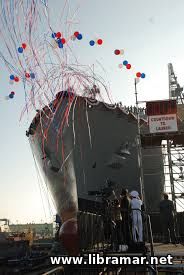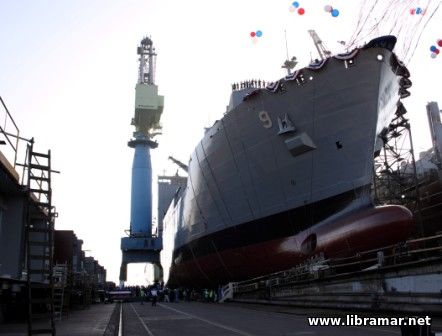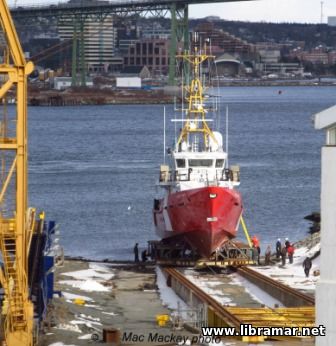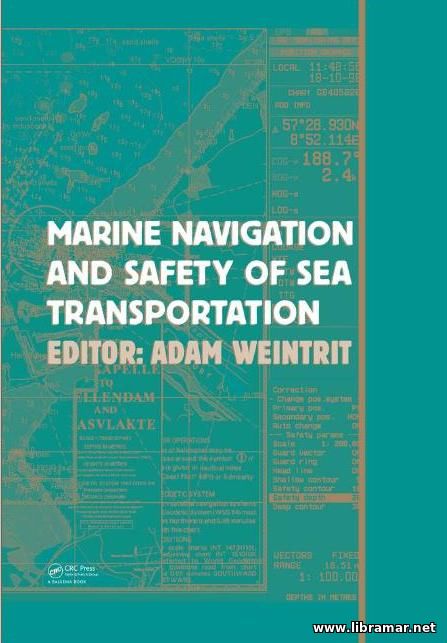Launching a Ship

The launching of a newly constructed vessel is deservedly considered one of the most critical events in the whole building process and one that is potentially hazardous if the movement of the large, yet fragile, mass that is supported on a comparatively frail structure is not properly planned and executed. Configuration of design and selection of materials for suitability and strength and the control of, and making use of, the natural forces of gravity, buoyancy, water resistance and friction is, in essence, the art of ship launching. A properly engineered launching can be accomplished safely and efficiently. The development of this engineering plan is one of the most important tasks facing the shipyard naval architect.
At the time of receipt of a request for a proposal, major preliminary calculations are commonly made in order to verify that the vessel can be constructed and launched, in one or mоге pieces, using facilities existing or suitably modified, and this would typically allow to make some basic planning. Following contract award, further calculations are prepared to exactly locate the vessel on the building slip, determine forces acting on the ground ways, cradle and ship, and to provide a basis for the design and delineation of the launching arrangement.
Due consideration must be given as necessary to building slip and ground way capacity from standpoint of length, breadth, vertical clearance and local and overall load carrying capacity. Lightweight of the vessel is normally obtained from specifications, or is estimated, and is used as a basis for estimated weight in launching condition. Longitudinal, vertical, and transverse position of vessel's center of gravity is estimated. Availability of suitable existing sliding and ground ways is verified or proportions of new ways are calculated to provide suitable unit pressures on the launching grease. Method of release is determined.
Preliminary Bonjean curves are produced, if they are not readily available, and drafts of vessel afloat are properly determined. Assuming a tide height conservatively less than high water springs, maximum way end and pivoting pressures are determined as is possible tipping and drop off. Satisfactory transverse stability is verified and means of checking the launched vessel are determined. Following contract award, the preliminary calculations are reviewed and refined as a basis for the final studies, calculations, and plans.
 There are two main methods of launching newly built vessels. In the traditional method the vessel is supported by a cradle which rests on inclined, or inclinable, ways. At the interface between cradle and ways there is launching grease or some other means of reducing friction. Release of the cradle lets the vessel and cradle slide into the water. The vessel may enter the water stern first, bow first, or sideways.
There are two main methods of launching newly built vessels. In the traditional method the vessel is supported by a cradle which rests on inclined, or inclinable, ways. At the interface between cradle and ways there is launching grease or some other means of reducing friction. Release of the cradle lets the vessel and cradle slide into the water. The vessel may enter the water stern first, bow first, or sideways.
In the other method, the vessel is supported by a translation system cradle and/or by blocking and shoring which rest on a platform which may be fixed or movable. If the platform is movable, it is lowered, possibly with trimming, until the vessel is afloat. With a fixed platform, water is caused to rise around the vessel until it floats.
Have a look in the next article where we detail each of the launch methods. A good understanding of each method is a must-have knowledge enabling shipbuilders, particularly those involved in the final delivery of the ship, to choose a most suitable methods of launching that would provide safe and effective completion of the long construction process.
The "Read Later" function allows you to add material to this block with just one click. Just click on the icon and read the articles that interest you at any convenient time.


